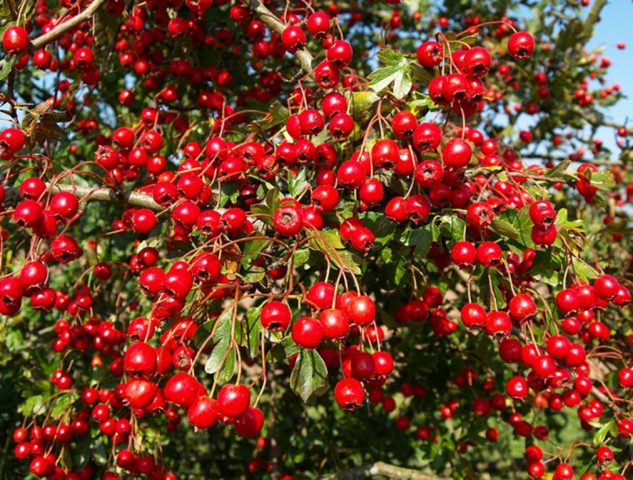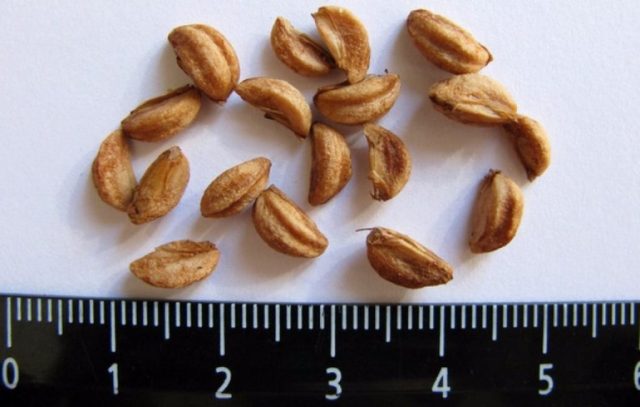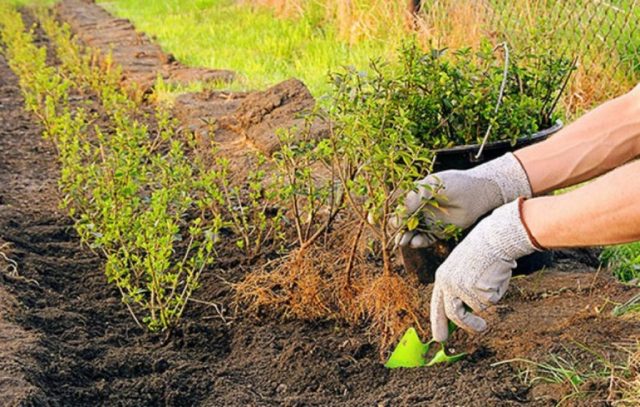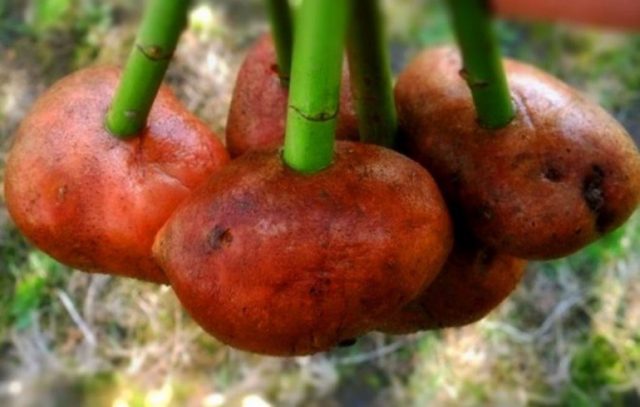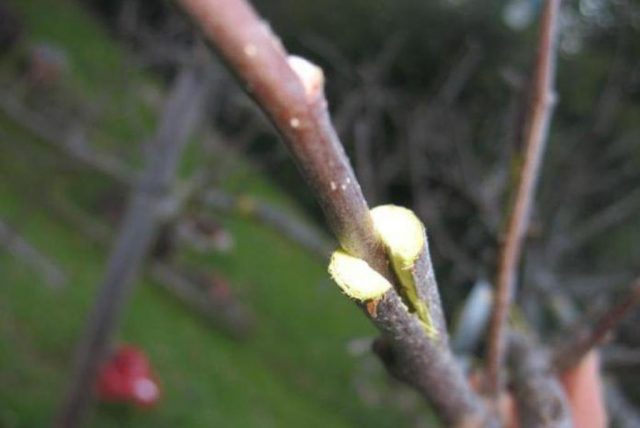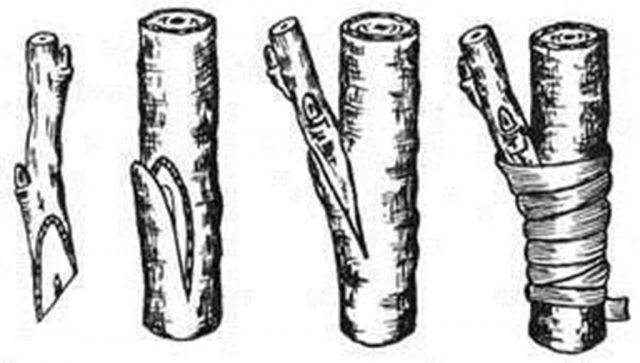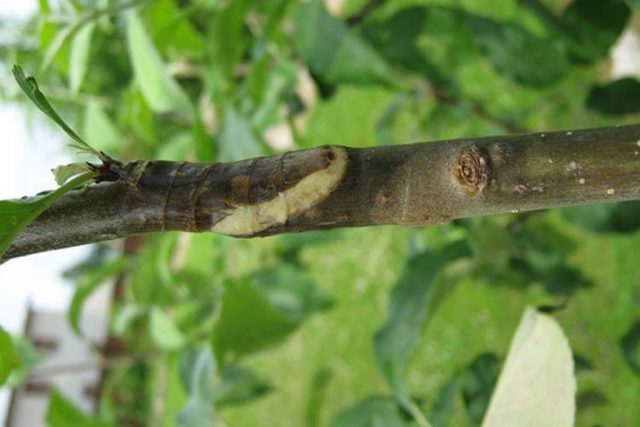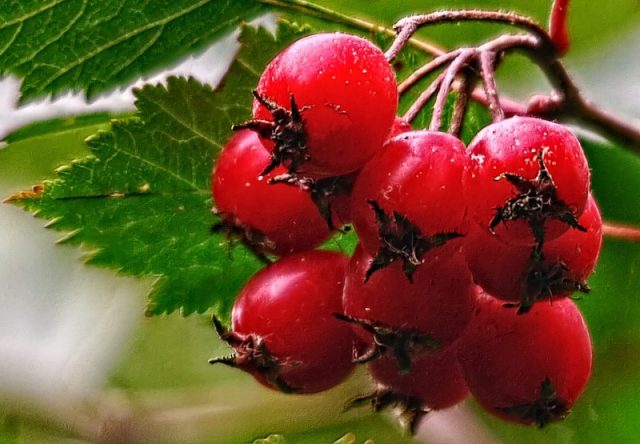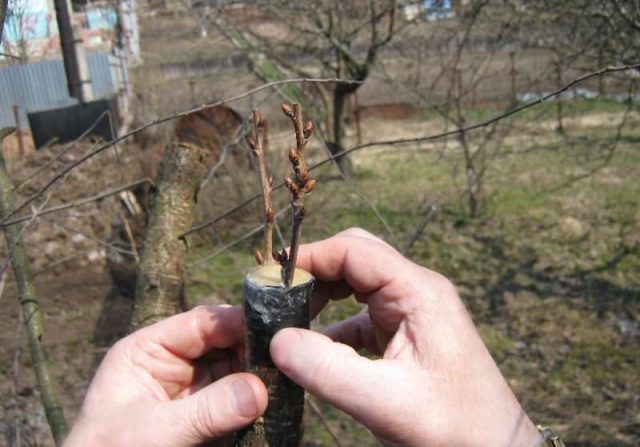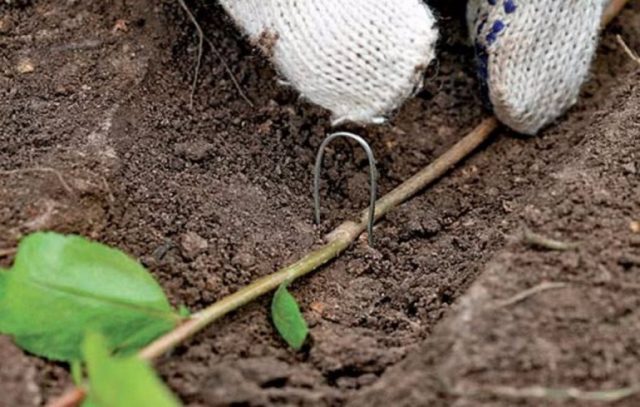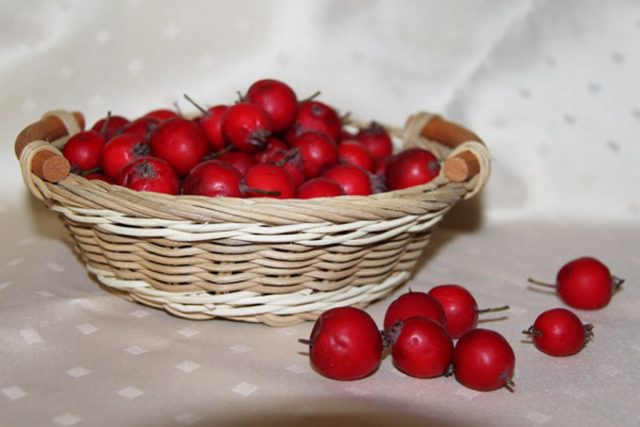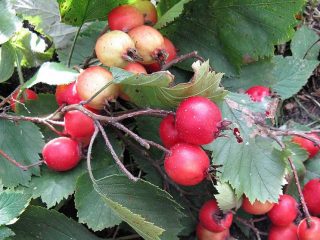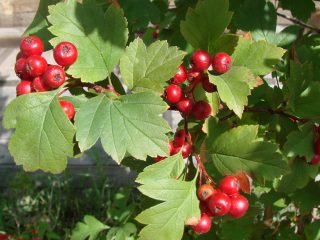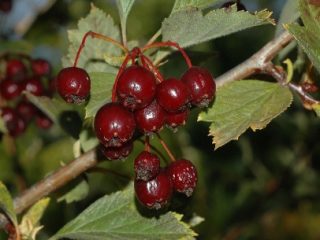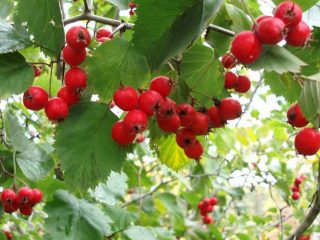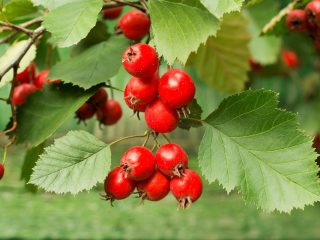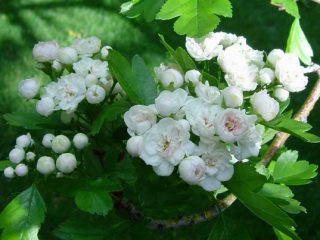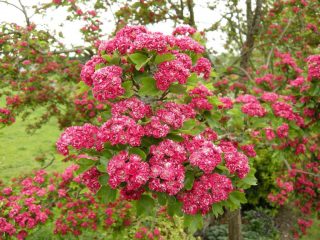Content
Hawthorn is a perennial shrub with fragrant flowers and bright red fruits from the Rosaceae family. When growing in a summer cottage, every gardener should have an idea of how hawthorn can be propagated. The plant is responsive to all methods of propagation; by choosing the most suitable one, you can grow a beautiful shrub that will decorate your summer cottage.
How does hawthorn reproduce?
In order for hawthorn to develop well in the garden, you need to know the rules of care, planting and propagation.Hawthorn can be propagated by seeds, cuttings, offsets, grafting and root cuttings and growths:
- Cuttings. For this propagation method, young green shoots are cut at an acute angle, 10–15 cm long. The lower foliage is removed, the upper foliage is shortened by half the length. The prepared planting material is planted in soil made from sand and peat. In order for rapid root formation to occur, the cuttings are treated in “Kornevin” or “Epin” and create air humidity of at least 80%. The method has disadvantages: poor rooting, low survival rate.
- Root growths. Since the plant is a bush, root branches are formed every year. In autumn or late summer, the offspring is carefully disconnected from the mother bush and transplanted to a prepared place.
- Withdrawal. To obtain a new plant, 1–2-year-old shoots are placed in a prepared trench so that the upper part rises above the surface of the ground. The outlet is covered with earth, the soil is spilled and mulched. At the end of summer, the shoot will take root and be ready for replanting.
- Root cuttings. Planting material is stocked in the fall. For this method, lignified roots 10–15 cm long are used. In spring, the rhizome is divided in half and planted in the ground at an acute angle, leaving 1 cm above the surface. Germination occurs only at air humidity of at least 80%.
- Seeds. The seeds are covered with a thick shell and the probability of germination is very low.
Before sowing, for better germination, you need to listen to the following advice:
- use unripe fruits;
- carry out stratification;
- treat the seeds with sodium nitrate;
- Before sowing, soak for 5 days in warm water.
Propagating hawthorn by seeds and cuttings is a difficult process that can bring negative results instead of the expected ones.
How to grow hawthorn from seeds
Propagating hawthorn by seeds is painstaking work and requires a lot of time and patience. A shrub grown from seeds will not inherit the beauty of the mother plant, therefore it is not recommended to propagate valuable varieties using this method.
Growing hawthorn from seeds at home
It is difficult to propagate hawthorn at home, and this method is not suitable for young gardeners. Before planting, it is necessary to prepare the seed, container and soil. After the first shoots appear, the plant needs proper care.
Stratification of hawthorn seeds
To obtain uniform shoots when propagating hawthorn by seeds, the seed must undergo stratification. Without preliminary preparation, the seeds will not sprout.
For propagation, unripe, large, healthy fruits are selected. The shell is cut and the pulp and seeds are removed, which must undergo stratification. For this:
- Planting material along with the pulp is soaked in warm water.
- After a day, carefully remove from the water and rub through a sieve.
- The separated grains are soaked in 1% potassium nitrate for a day.
- The prepared material is wrapped in canvas and stored in a cellar or refrigerator for the whole winter. You can use another method: the seeds are mixed with river sand, placed in a container, spilled and put in a cool room.
Preparing soil and containers
After the preparatory work, the seeds are planted in a wide, deep pot. A 15 cm layer of drainage and nutrient soil are placed at the bottom.To prepare the soil for planting, you need to mix peat, coarse sand, humus and leaf soil. Before sowing the seeds, water the soil with boiling water or a weak solution of potassium permanganate.
How to plant hawthorn seeds
Since the germination rate of hawthorn seeds is low, they are sown quite densely and shallowly. After planting, they are sprinkled with soil, watered and a microgreenhouse is installed. After germination, the shelter is removed and the container is moved to a warm, sunny place.
Growing hawthorn from seeds
Caring for hawthorn seedlings is simple. It consists of regular watering with warm water at the root. After irrigation, carefully loosen the soil. Twice a year, fertilize with organic fertilizers. Hawthorn is a slow-growing plant, the annual growth is 15–20 cm. After the plant reaches 30 cm and develops a strong root system, it can be safely transferred to an open area.
How to plant hawthorn seeds in open ground in the fall
In order for planting hawthorn seeds to give a positive result, they take prepared seed from last year. In this case, germination can occur only after a year and a half.
Seeds are sown in a sunny place, avoiding damp and wet places. The earth is dug up, humus and rotted manure are added. Make shallow furrows, lay the planting material to a depth of 1–1.5 cm and cover it with soil, water it abundantly, and cover the bed with pine needles or dry leaves.
How to grow hawthorn from cuttings
Propagating hawthorn by cuttings is a difficult and painstaking task.They take a long time to take root and are reluctant, therefore, when choosing the method of propagating hawthorn by cuttings, you need to take into account that the planting material takes 1.5–2 years to take root and it is not a fact that the plant will begin to grow and develop.
Is it possible to take hawthorn cuttings?
Cuttings are cut before the leaves bloom. If rooting is carried out under a film cover, the shoots can be cut in late autumn, after leaf fall.
Propagation of hawthorn by cuttings in autumn
For cuttings, one-year-old, green shoots, no more than 1 cm thick, are selected. Side shoots growing on the south side are ideal for this. The selected shoot is divided into cuttings of 10–15 cm.
Freshly cut planting material is kept for about an hour in a root formation stimulator and planted in a large pot with nutritious soil. The soil can be purchased at the store, or you can prepare it yourself. To do this, mix equal parts of river sand, peat and chalk.
The soil is watered with the rooting agent in which the cuttings were located, and the cut shoots are placed. To create the temperature and humidity conditions necessary for germination, the pot is covered with a plastic or glass bottle.
The appearance of the first leaves is a sign of rooting. After this, the shelter is removed for 10–15 minutes, increasing the time spent in the open air daily. Caring for seedlings consists of watering and fertilizing. During the growing season, young seedlings are fed with nitrogenous fertilizers. Watering is carried out abundantly, but infrequently after the top layer of soil has completely dried.
Next year, the strengthened, rooted bush can be planted in the chosen location.
Propagation of hawthorn by cuttings in spring
In spring, planting material is cut until the sap flows. The technology for cutting and preparing for planting is the same as when planting cuttings in the fall at home.
Planting material is planted in a checkerboard pattern, maintaining an interval of half a meter between rows, and 20 cm between plants. For rooting, an air humidity of at least 80% is required.
To maintain temperature and humidity conditions, special fog-forming installations are made. For this:
- Dig a ditch half a meter deep, fill ½ with compost or humus, add a layer of sand on top and plant planting material.
- The trenches are compacted tightly on both sides, and glass in a wooden frame is installed on top (you can use old window glass).
- To ensure that the frame fits tightly, boards are laid around the perimeter of the pit.
- The inside of the glass is lined with light, moisture-absorbing fabric.
- On a sunny day, when the moisture absorbed into the fabric evaporates, fog will be created, thanks to which the temperature and humidity conditions will be maintained.
If, after propagating the hawthorn, the cuttings overwintered well, this is the key to success. In the spring, during the growing season, the young plant begins to be intensively fed with nitrogenous fertilizers after abundant watering.
The next year, the propagated plants are planted in a permanent place with an interval of at least 2 m. But for better growth and development, experienced gardeners advise replanting 4 years after rooting.
Gardeners began to practice rooting hawthorn in potatoes:
- Prepare the chopped shoots.
- All eyes are removed from potatoes.
- After this, the cuttings are inserted into the root crop and buried in the ground.
- The earth is watered and mulched.Cover the top with a glass or plastic jar.
Hawthorn grafting
Grafting is the best way to propagate hawthorn. Rowan and an old, poorly fruiting hawthorn bush can be used as a rootstock.
Which method to choose
There are 3 methods of how to plant hawthorn:
- into the cleft;
- in the butt;
- copulation.
In the split - the top of the branch (rootstock) is cut off at the required height, after which a vertical cut 5 cm deep is made on the stump, into which the cutting (scion) is inserted. The prepared material for propagation must be healthy and have 3–4 buds. The lower cut of the scion is made cone-shaped to make it easier to place in the created gap.
In the butt - the method of execution is the same as when grafting into a cleft, but there is one difference: the scion is inserted into a pocket cut on the side wall of the rootstock.
Copulation is a popular and effective method. For this method, the diameter of the rootstock and scion must be the same. On the scion and rootstock, oblique cuts are made at an angle of 30 degrees to tightly connect the tissues.
Copulation is the easiest method; even a novice gardener can handle it. Pros of copying:
- ease of execution;
- 100% survival rate;
- you can graft various fruit trees and shrubs;
- after 12 months you can collect the first fruits.
What can hawthorn be grafted onto?
Hawthorn can be grafted onto red rowan and onto old, non-fruitful hawthorn bushes. The best rootstock for hawthorn is considered to be red rowan. Reproduction in this way makes it possible to obtain a standard tree, on which, as practice shows, the taste and medicinal qualities of the fruit do not change.
When grafted onto an old bush, the bush is rejuvenated and fruiting resumes.
Grafting hawthorn onto an apple tree
Closely related plants can be grafted onto an apple tree. That is, an apple tree can be propagated by grafting with apple tree or apple tree with pear.
The main condition for any grafting is that only stone fruits take root on stone-type specimens, and pome-shaped specimens take root on pome-bearing specimens.
When interspecific trees propagate, the plant will be short-lived, with a small and poor-quality harvest.
Is it possible to graft hawthorn onto a pear seedling?
You cannot graft a hawthorn onto a pear; you can graft certain varieties of pear onto a hawthorn. When doing experimental grafting, it is necessary to remember that when propagated in this way, fruiting occurs in 2–3 years. Therefore, when grafting specimens of different breeds, you can lose a lot of time and not get the expected result.
Timing and rules of vaccination
Hawthorn can be propagated by grafting after the snow melts, before the buds open, or immediately after the leaves fall. For the scion, take 2 summer plants with a root collar diameter of 1 cm. The grafting is carried out at a height of 1 m, and the side shoots are not removed.
The key to good survival depends on cuttings. They should be:
- cut from the south side of the tree;
- prepared in the fall and overwintered in the cellar or refrigerator;
- they should have from 4 to 7 well-developed buds.
Whatever vaccination method is chosen, the technique is the same for everyone:
- The grafting site is tied with polyethylene or insulating tape.
- Open areas are treated with garden varnish.
- The joints must be protected from moisture penetration, but not overtightened.
- A month after the kidneys appear, the bandage is loosened.
- Until complete growth, the hawthorn needs care and attention: protection from direct sunlight, removal of excess branches, prevention of insect pests.
The success of the work will be visible in 30–40 days. If propagation is carried out according to the rules, and the scion quickly takes root, the hawthorn will begin to bear fruit the next year.
What can be grafted onto hawthorn
Hawthorn is an excellent rootstock for pears. The seedlings grafted on it develop well and bear fruit. In order for a fruit tree to begin bearing fruit, it is necessary to choose the right varieties. The following varieties reproduce well on hawthorn: Talgar beauty, Zolotovorotskaya, Prikarpatskaya, Bere Kyiv, Hoverla. They give good growth, begin to immediately form flower buds and bear fruit.
Some varieties, according to gardeners, do not take root on hawthorn. These include: Sonatina, seedless Dricha, 56-25 Vyzhnitsa.
How to propagate hawthorn with basal suckers
This propagation method is used for bush forms of hawthorn. The method is applied in late August-early September.
The emerging annual shoots are carefully separated, but not dug up, from the mother plant, trying not to damage the horizontal root. After the independent young plant overwinters, takes root and begins to turn green, it can be dug up and transplanted to a new place.
Hawthorn propagation by layering
Only bush forms of hawthorn can be propagated by layering. The technology of the work is very simple:
- After the end of spring frosts, annual shoots are carefully placed in a prepared trench.
- They are attached to the soil with a wooden spike or bracket so that the top is located above the soil surface.
- The trench is covered with earth, watered abundantly, and the soil is mulched.
- Separation of the offset from the mother plant is carried out in autumn or spring.
How can you propagate large-fruited hawthorn?
You can find a large assortment of large-fruited hawthorn seedlings on sale, but many varieties are expensive and not everyone can afford them. Therefore, in order to grow a beautiful and useful hedge on your garden plot, you need to know how large-fruited hawthorn propagates.
Large-fruited hawthorn reproduces by seeds and vegetatively. When propagated by seeds, the first shoots may appear several years after planting. A plant grown from seeds loses its maternal resemblance, and fruiting occurs in 7–8 years.
Hawthorn reproduces well vegetatively. The pruned old plant begins to intensively grow basal shoots, which are dug up and transplanted to a new place.
Grafting a young cutting onto an old, non-fruiting plant also gives good results.
Conclusion
Hawthorn can be propagated in different ways. Each of them has its pros and cons. By choosing the most suitable one, you can diversify your garden with beautiful and useful shrubs, which will be decorated with white, fragrant flowers in the spring, and will delight you with bright red juicy and medicinal fruits in the fall.
